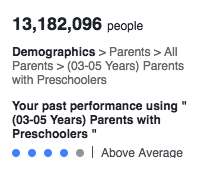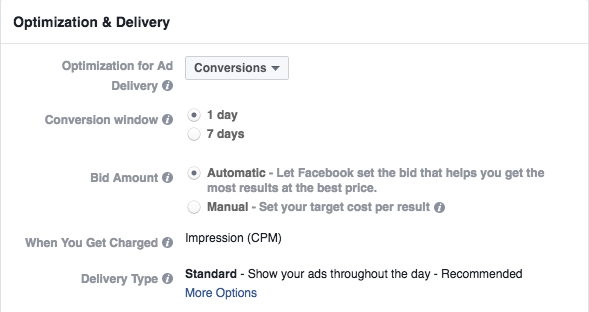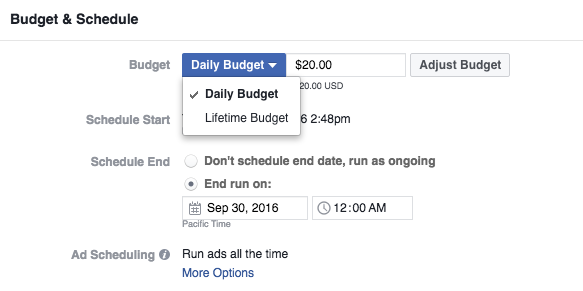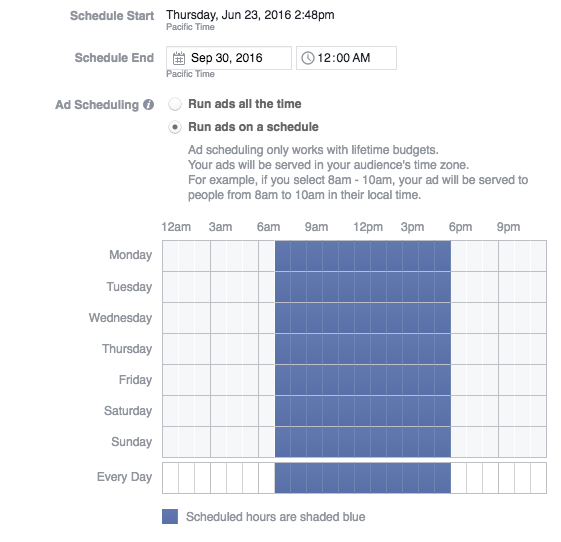3 Quick Facebook Optimizations To Charge Up Your Performance

If you’re coming from AdWords or Bing, Facebook can seem like it lacks many customization options. The lack of options can leave advertisers feeling like they lack control in how their campaigns are behaving.
Some of the lack of customization seems to be by design as Facebook likes to guide users toward its auto-optimized bidding and ad serving tools, but there are a number of options that are easily looked over if you are not paying attention.
Let’s look at 3 quick optimizations that you can use today if you want more manual control over your Facebook campaigns. It isn’t an exhaustive list by far, but should help you on the road to more manual control.
1) Performance Feedback On Targeting Choices
Update (12/6/16): We’ve since found out this was a limited test by Facebook and is no longer available.
At the ad set level (where you do your targeting) Facebook has an option for what it calls “detailed targeting.” Here, you can choose specific demographic categories (grandparents, etc.), interests (sports, sailing, etc.), job titles, and many other areas that you might want to target.
A common strategy is to lump a bunch of interests or demographic categories together into one audience that creates a large enough audience to target your ads. You then run your ads to this audience and make decisions on the targeting as a whole rather than individual pieces. The issue is that you aren’t able to easily see how individual targets performed and change them based on that performance.
When you mouse over a category, Facebook will pop out a description with a visual representation of past performance in the account.

Above, you can see that targeting parents with 3-5-year-olds has performed above average for this account. It’s not a ton of information, but if you are scanning through your various targeting it can be an easy way to cut out targets that have shown poor performance.
An example could be just focusing on those targets that have achieved a 3 or higher while cutting out everything else. You could then see how performance increases or decreases based on these changes. At the very least, it gives you visual feedback to judge which targets might continue to be useful and which ones aren’t helping.
2) Conversion Window Optimization
It’s not uncommon to optimize the delivery of your ads to those most likely to convert, using Facebook’s algorithm to do the heavy lifting. In the past, you didn’t have a lot of options for dictating what the algorithm used to make decisions, but in a fairly recent update, Facebook added the ability to choose the conversion window the algorithm uses.
Facebook gives you the option to tell the algorithm to use either a 1 day or 7-day window when deciding who to show ads to using prior conversion data.

When would you choose a 1-day window over a 7-day window or vice versa? It really comes down to how fast people convert after clicking on your ad. If people usually convert within a day of clicking an ad, then the 1-day conversion window will allow Facebook to optimize as fast as it can using the most recent data.
If people typically take longer to convert, you’ll want to use the 7-day window so Facebook has the chance to see a fuller picture of conversion performance and adjust accordingly. Ultimately, you’ll want to choose the window that best represents how people interact and convert.
3) How To Get Manual Ad Scheduling
A common question when it comes to Facebook advertising is if there is the ability to do manual ad scheduling by hour and day. As mentioned above, Facebook seems to want to push you to its algorithm to decide when to show your ads, but there is an option to do manual ad scheduling. It does require a trade-off in how you manage your budgets, but it’s possible.
Below, you can see we have the option of lifetime budgets or daily budgets.

If you choose daily budget you don’t have an option to manually schedule your ads by hour and day, but if you choose lifetime budget the option opens up.
Scrolling down you’ll see the option for “Ad Scheduling” and the ability to use “Run ads on a schedule” is now available.

Now you have the option to manually choose which days and times your ads show based on your own strategy and data.
Conclusion
Facebook doesn’t allow the amount of manual customization that other platforms offer, but it does contain more options than most people give it credit for. You just have to know where to look. Hopefully, these 3 quick optimizations can help you make adjustments to your own campaigns and charge up your Facebook performance.



